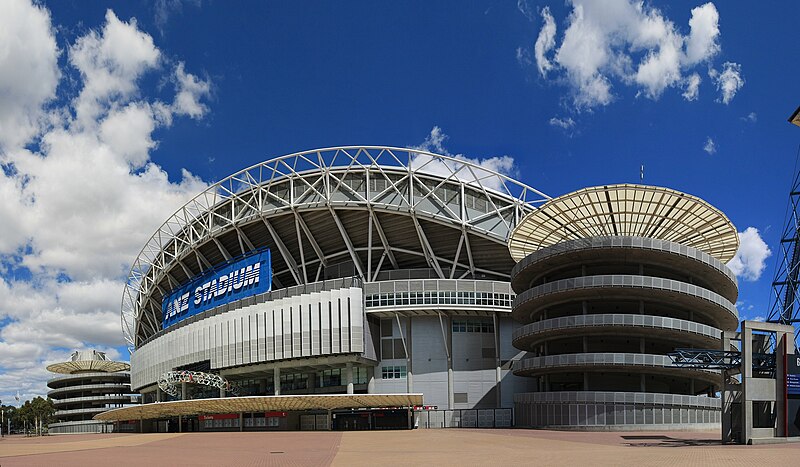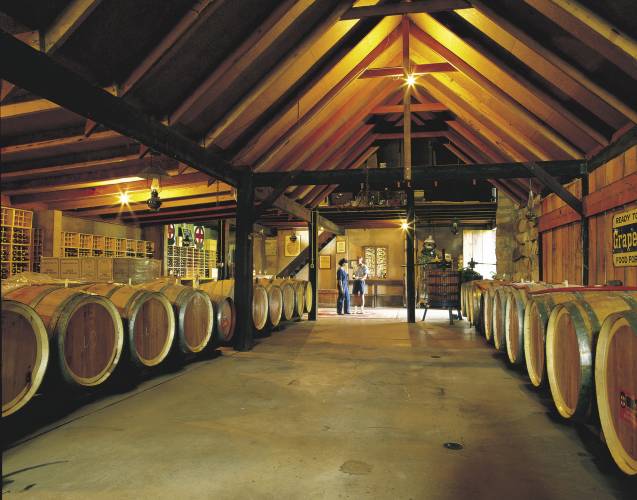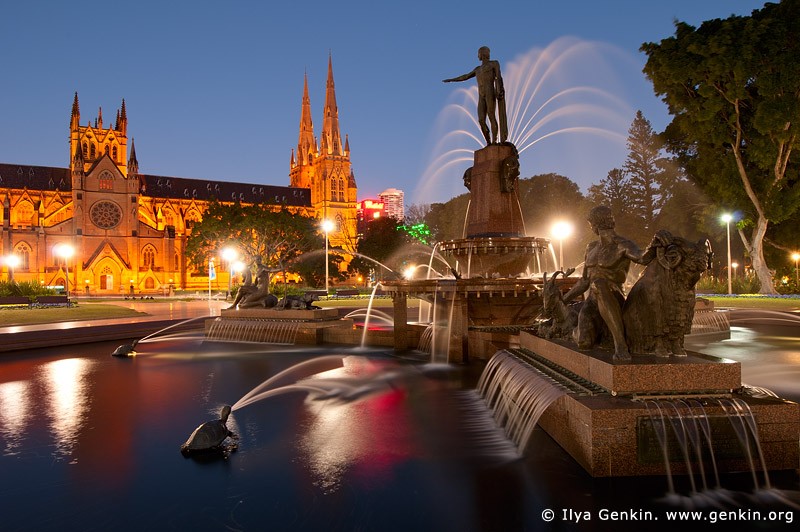Welcome to CraySydney Adventure
Let's take an extraordinary adventure in Sydney with five Asians
Sunday, 26 May 2013
Sunday, 5 May 2013
Awesome place - Olympic park :D

Sydney Olympic Park
is a large sporting, cultural and leisure complex in western Sydney, New South Wales, Australia. It is also an official suburb of Sydney. Sydney Olympic Park is located 16 kilometres west of the Sydney central business district, in the local government area of Auburn Council.
The area was redeveloped for the 2000 Olympics. The facilities built continue to be used for sporting and cultural events, including the Sydney Royal Easter Show, Sydney Festival, Big Day Out, Sydney 500 and a number of world-class sporting fixtures. The suburb also contains commercial development and extensive parklands. The area was originally part of the suburb of Homebush Bay but was designated a suburb in its own right in 2009.

Allphones Arena
Looking for things to do in Sydney? Walk in the footsteps of the world’s finest athletes, play on the same fields and swim in the pool where medals have been won. It’s one of the few places where you can train casually next to some of Australia’s best athletes.
Or catch all the atmosphere and watch your favourite sport or team; netball - NSW Swifts and Diamonds, AFL - Sydney Swans and the GWS Giants, Rugby League - Bulldogs, Rabbitohs, NSW State of Origin Blues and the NRL Grand Final teams, Football – Socceroos and Matildas, Rugby - Waratahs and Wallabies, Hockey – NSW Arrows, Hockeyroos and Kookaburras and Cricket - Sydney Thunder and the Australian Cricket Team

Sydney Olympic Park has over 35 kms of cycleways for safe bike riding in the heart of Sydney.
Explore the 430 hectares of Sydney bike tracks in the rolling green parklands of Sydney Olympic Park by bike - bring your own wheels or hire them in the Park.

Parks
With an irresistible choice of parks, Sydney Olympic Park offers extensive facilities and different vistas to suit your mood. Whether you're a first time visitor or a regular, there's always something new to discover.There's nothing like a relaxing alfresco meal in one of our picturesque parks with superb facilities that include free BBQs, picnic shelters and shade areas, walking trails, cycle paths, playgrounds and playful fountains that encourage you to get wet - just for the fun of it!
The Park is an urban biodiversity hotspot with significant habitats for hundreds of species of plants, birds, frogs, bats, reptiles and fish. Amongst the protected wetlands and woodlands you can bird watch, spot endangered frogs such as the endangered Green and Golden Bell frog, or just de-stress in the cool green calmness under the trees.
So guys as you can see, remember charge your carema full to Olympic park :D
Sydney observatory- part of the power house museum

What to see and to do in Sydney observatory?
Sydney Observatory is a magical place to visit. The handsome stone observatory building with its distinctive copper telescope domes is set in gardens on top of Observatory Hill. It overlooks parkland and glorious Sydney Harbour – a natural oasis not far from the centre of the city. It is only a few minutes walk from most of the highlights of the historic and charming Rocks precinct: craft centres, cobbled laneways, stone cottages, cosy cafes and characterful pubs.
From the beginnings in 1858 as a centre of scientific research for the colony of New South Wales, Sydney Observatory is now a museum and educational centre. The programs reflect the rich history of the site and of Sydney Observatory as an astronomical observatory, timekeeper, signal station and meteorology centre. Recent archaeological excavations have provided insight into the use of Fort Phillip at the site (next to the Signal Station), and archaeological programs are increasingly also being offered at Sydney Observatory to cover this part of its fascinating history.
Night Sessions
 A night telescope viewing session is the quintessential Sydney Observatory experience. But any visit to Sydney Observatory is a visit to remember.
A night telescope viewing session is the quintessential Sydney Observatory experience. But any visit to Sydney Observatory is a visit to remember.
View the stars and planets through telescopes (weather permitting), as well as learn about the universe, experience 3-D space theatre and view the historic astronomical and meteorological objects on display. There is also plenty of opportunity to ask questions of the experienced and friendly astronomy educator who will guide the session.Evening sessions of about one and a half hours are held regardless of weather. If viewing through the telescopes is not possible due to sky conditions, a fun planetarium session is provided instead. Night sessions must be pre-booked. Telephone bookings for night sessions close at 5pm.
Open nightly Monday to Saturday except Christmas Day, Boxing Day and Good Friday holidays; open Sunday nights during school holidays.
Saturday, 4 May 2013
Wine in Hunter Valley

Historic Wollombi
Cross the Sydney Harbour Bridge and travel through Sydney's North Shore, then over the Hawkesbury River to Wollombi, first settled in 1820. Take a stroll around this historic village of Wollombi.

Hunter Valley
The Internationally acclaimed Hunter Valley is one of Australia's finest wine regions. Head into the valley and enjoy magnificent views overlooking Cessnock, Pokolbin and the surrounding vineyards. The Hunter Valley is Australia's oldest wine producing area with a colourful history dating back over 150 years. The Hunter region grows many varieties of grapes including Chardonnay, Semillon, Cabernet Sauvignon, Gewurztraminer, Pinot Noir and Shiraz. With over 50 wineries in the area, each has its own special cycle of wine making.

Hunter Valley Wineries
At McWilliams Mount Pleasant Estate, part of the largest family owned, 100% Australian wine company. A sumptuous two course lunch is provided accompanied by of course, specially selected wines! Continue to Hunter Valley Garden Cellars and Lindemans Winery for a further tasting before arriving at Hunter Valley Gardens village. You'll have free time to explore and visit the numerous boutique specialty shops, restaurants, attractions and galleries.
So guys as you can see, awsome view in hunter valley, remember charge ur carema full when u ready to Hunter Valley.:D
Fun Blue Mountain trip
 The Blue Mountains is a World Heritage wilderness that begins 60km west of Sydney Australia. The mountains are home to 400 different species of animals, 40 of them rare or threatened. It is surprising to most people to discover that they are not actually mountains but rather a valley that has been formed by thousands of years of erosion.
The Blue Mountains is a World Heritage wilderness that begins 60km west of Sydney Australia. The mountains are home to 400 different species of animals, 40 of them rare or threatened. It is surprising to most people to discover that they are not actually mountains but rather a valley that has been formed by thousands of years of erosion.Only 2 hours from Sydney the Blue Mountains are the perfect distance for a day trip but a full weekend is the perfect amount of time to really experience the area.
How to get to the Blue Mountains
Katoomba - the main centre in the Blue Mountains is 122km west of Sydney. There are also train stations at the towns of Wentworth Falls and Leura.
Train: The train from Central Station in Sydney takes approximately 2 hours to reach Katoomba. Tickets are cheaper after 9am or on weekends. The return trip can be made using a variety of tickets. The cheapest is the off-peak return (purchased after 9am) at $10.80 If you want to leave earlier than that the ticket is $15.60.
Car: It is approx 1hour 40 mins drive from the city. Most of the journey is via a motorway although the last section can be quite slow. Traffic on the weekends, particularly Sunday afternoons, can be very bad. For the quickest run back to Sydney it's best to leave the mountains after 5pm.
The Three Sisters Katoomba
The rock formation gets its name from a dreamtime legend that says the rocks were actually 3 young sisters whose father turned them to stone while he fought an angry bunyip. He lost the fight and the girls were forever stuck in rock.
The Giant Stair way or the Furber Steps
You choose 1000 or 800 step staircase down to the valley floor below?

The Furber steps are a little longer but I think perhaps a little easier. There are several lookouts that run off the walk.. don't miss Juliet's Balcony! Once at the bottom of the steps you can catch the scenic railway back up to the top. I have done this walk and it's not that hard. I would rate it medium difficulty, make sure you wear sturdy shoes.
Wentworth Falls
Scenic World
The Katoomba Scenic Railway & Skyway
The Skyway travels over 3/4 km across the Jamison Valley providing amazing views. The skyway has a glass floor that is opened to reveal Katoomba Falls and the valley below.
So guys, remember to charge ur camera full when you head to Blue Mountain.:D
Sydney's Royal Botanic Garden
If you love animals, insects, plants, and all those stuff, then you should
definitely visit, The Royal Botanic Garden.
It is located near Circular Quay and the best thing is that it’s free
entry. It is a prefect place for you to
relax, take a stroll, or even to have picnic with your family.
The park boasts more than 7500 species of plants, and spans across 30 hectare area,
filled with vibrant green color. Some of the plants there are more than 100
years old.
The park is easy to
navigate around. There are a lot of signs and symbols that shows where things
are. But if you feel you need so, there is a guided tour of the garden every
10:30 am, starting form the visitor’s area in the palm grove center in the
middle.
The best thing is that its located in Circular Quay, next to
the Opera House and The Harbor Bridge. That way, it is perfect for tourists, or
if you are just sight seeing around the CBD. Hit 3 landmarks in one go….. The
also have a New Year events there held every year. It is said to be one of the
“best” location to see the fireworks.
During Summer, they also have an “Out Door Cinema”. It is
free, and is a romantic experience to watch outdoor under the stars. Ohh, and it is also free….
The best thing about this garden, is that its is open 24/7
except for Christmas day and good Friday, and it is free to enter… not to
mention the great view of the Harbor Bridge and the Opera House.
Stress relief- Hyde Park
The park was originally a racecourse and sporting ground.
However, today it has become a place where tourists competes who can take the
best pictures of birds and trees early in the morning, a stress relief escape
ground for stressed office workers in the afternoon, and in the evening, it
becomes a dating spot. The park contains more than 580 mature exotic and native
trees.
Attractions at Hyde Park:
The Archibald Fountain:
One of the park’s attraction is the Archibald Fountain. The Fountain was
build by a French sculptor, Francois Sicard back in 1930’s to commemorate the
association between French and Australia in World War I. The art deco fountain,
which depicts a bronze Apollo surrounded by other mythical figures, was a gift
to the city of Sydney by J F Archibald (1856-1919), founder of Australia's Bulletin
newspaper and later magazine.
Anzac Memorial:
 |
| Anzac Memorial |
Another attraction Is the ANZAC war memorial and the lake of reflection
located at the southern end of the park. It is a memorial that the state New
South Wales dedicated for the soldiers who fought in the Australian and New
Zealand Army Corps in World War I, and to the servicemen and women who fought
in other wars in which Australia was involved. The building was completed in
1934, and the architect was a Sydney born, Bruce Dellit. The memorial is open
everyday 9am to 5pm, except for Good Friday and Christmas day.
You will find this monument in the north-east area
of the park in a secluded area. Dalley was a member of the New South Wales
Legislative Assembly who campaigned for various reforms including the death
penalty for rape. This statue is to honor the Sydney-born political figure and
reform campaigner William Bede Dalley.
 |
| Memorial Cannon |
Memorial cannon:
On the North-east side of the park sits a 40punds (19kg) cannon. This
cannon is said to have been cast in 1806 in Scotland and bears the Royal Cypher
of King George III.
 |
| Sandringham Garden |
Sandringham Garden:
The Sandringham Garden is located in the
southeastern side of Hyde Park North. This garden is a romantic dating spot,
where a lot of couples sits In the benches watching the circular shaped garden
and water fountain in the middle. The garden was dedicated by Queen Elizabeth
II to her predecessors George V and George IV.
Captain Cook Monument:
The Captain Cook Monument is located in the
north-east section of the south part of Hyde Park. It is a memorial to Captain
James Cook, who first landed in Australia.
Frazer Fountain:
 |
| Frazer Fountain |
| Obelisk Tower |
Obelisk Tower:
on the west side of the park, along Elizabeth street, you will find a
needle looking tower pointing to the sky at 22 meters high. It was built in
1857 to serve as a sewerage vent. The tower is said to have been modeled on
Cleopatra’s needle in London.
 |
| Olmypic Ring |
Olympic Ring:
As a remembrance of the year 2000 Olympic which was
held in Sydney, the iconic Olympic games ring logo is located along the centre
path from Liverpool St.
At south-eastern corner of South Hyde park, is a 104mm naval gun. The
Emden Naval Gun which was taken from a German warship, is said to be regarded
as a trophy of war.
As you can see, Hyde Park holds a lot of History, and there are plenty
of things to see there. Make sure you charge your camera batteries to full
overnight before coming here….
Subscribe to:
Posts (Atom)





